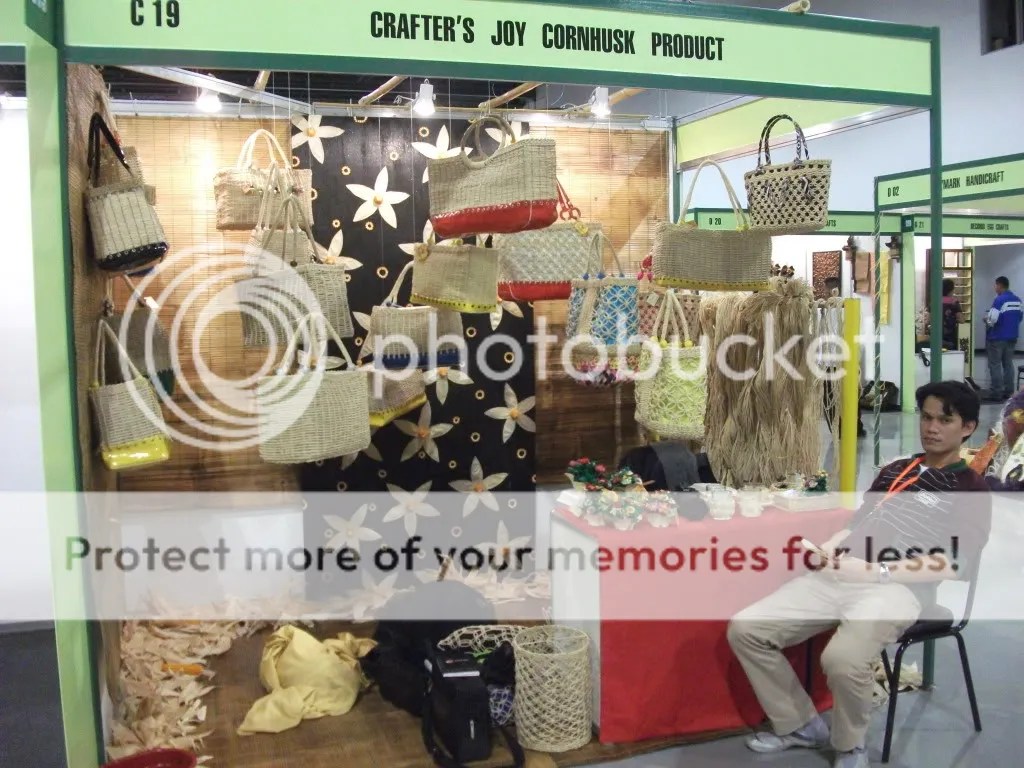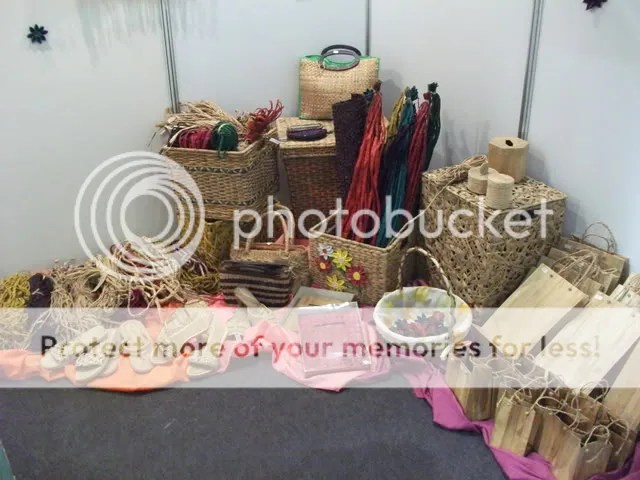Philippines is an archipelago with hundreds of creeks, stream, lakes, river and water system. Water plants are plenty and the country is rich in biodiversity. However some of the commonly grown water plants are introduced to the country.
Freshwater Aquarium set-up by: Mr. Achilles Antiquina Lussier
They are classified into Emergent, Submerged, Floating-leaved, Free-floating. Our team made a short list of 25 common water plants grown or found in semi-naturalized state.
We eliminated Ipomea aquatica or Kangkong / Kangkung, since it is used as food. Better post in another topic.
water plants grown in cement pond
25 Common Water Plants
25.) Ludwigia sedoides – commonly called Mosaic plant, False Loosestrife. This water plant originates from Brazil, Venezuela. This had become naturalized in many tropical, sub-tropical and even temperate countries.This blooms during June to August which coincide with the rainy season, But this may also bloom during the dry season. Some sell this from Php 50.00 small plant to as much as Php 200 in some online sites.
24.) Myriophyllum aquaticum commonly called parrot’s-feather and parrot feather watermilfoil. Parrot feather gets its name from its feather-like leaves that are arranged around the stem in whorls of four to six. This water plant originally is native of South America and quickly spread via the tropical aquarium trade in North America and elsewhere.
In some countries, Like the United Kingdom, Australia, Japan, Southern United States. parrot’s-feather can quickly clogged waterways and ponds. The growth can block sunlight and cause native plants to die because of light deficiency. The organisms that feed on the native plants can die off due to starvation.
This is also commonly sold in Cartimar and in many aquarium pet stores all over the country.
photo courtesy of pixabay : johnnykarlsson1-5486868
23.) Limnobium laevigatum is a floating plant commonly called West Indian spongeplant, South American spongeplant and Amazon or smooth frogbit. This floating plant is native to Central and South America and quickly spread all over the tropical and sub-tropical areas due to aquarium plant trade.
Cypreus alterniflolius
photo courtesy of : pixabay: jaclou-dl-5602247
22.) Cyperus alternifolius, common names are umbrella papyrus, umbrella sedge or umbrella palm,Indian matting plant. This was native to Madagascar in Africa but quickly spread in many parts of the world.
This is commonly seen in rice paddies, pond, creeks,irrigation canals throughout the country. The umbrella palm is sought after for its impressive height that can grow to six feet. It creates a soft backdrop for shorter aquatic plants, but it can grow notoriously fast and spread if not put in a container.
21.) Eleocharis acicularis is a species of spikeedge known by the common names needle spikerush and least spikerush. This is common in most aquarium stores in Cartimar and pet stores.
20.) Echinodorus grandiflorus Commonly called spade-leaf sword, creeping burhead, Amazon spade leaf. There were at least 40 known species of this genus and quite common in aquarium trade all over the world.
It is native to Brazil, Paraguay, Uruguay, Argentina,Venezuela and Florida in the United States of America.
This plant species is quite common is rice paddies, water irrigation ditches, ponds, lagoon and garden center. Immersed plants readily produce flowers and seeds but it can be grown submersed as well.
Small plants are being sold between Php 25.00 to Php 400 depending on the size. Variegated plants are also sold for a little bit higher compared to the ordinary green leaf types.
19.) Lemma minor commonly called duckweed, or lesser duckweed. Lemna minor is the common duckweed works well as a water purifier. It can help control the algae.
Some of the economic importance of Lemma minor is used as animal fodder, bioremediator, for wastewater nutrient recovery, and other applications. This is common in rice paddy fields, ponds, aquarium trade and lakes. It is also given as a feed to ducks, chicken and goose.
It is found in many areas of the world and have naturalized in Australia and South America. In aquarium trade, it is sold between Php 5.00 for a small cup to as much as Php 50.00
photo courtesy of pixabay: laila_-6779063
18.) Ceratophyllum submersum and Ceratophyllum demersum commonly known as the soft hornwort ,tropical hornwort, coontail or coon’s tail . This seems to have naturalized in almost all water system in the country.
Its fluffy, filamentous, bright-green leaves provide excellent cover for newly hatched fish. It is propagated by cuttings.
Sometimes they are so common that backyard hobbyist would give them away as freebies. They are sold between Php 10.00 to Php 50.00 depending on size in online sites.
photo courtesy of pixabay : loilamtan-4659988/
17.) Hydrocotyle vulgaris commonly called pennywort, whorled marsh pennywort, shield pennywort, pennyworth, money plant, lucky plant, copper coin, mangkok, Yahong-yahong is a flowering plant found in Europe, North Africa, North and Western Asia. This may have been introduced during the late Spanish colonial rule or early American regime in the country.
Hydrocotyle vulgaris blooming in a garden plot within Institute of Biology, University of the Philippines, Diliman, Quezon City.
Sometimes people would mistake this as gotu kola (Centella asiatica), since the leaves are almost the same. They are sold between Php 20.00 to Php 50.00 in online sites depending on how big the plant.
16.) Azolla pinnata is a species of aquatic fern known by several common names, including mosquito fern, feathered mosquito fern and water velvet. This is common in rice fields and waterways.
15.) Cabomba carolina – This is originally found as an aquatic perennial herbaceous plant native to North and South America. However human migration and introduction spread this water plant in many parts of the world. To some extent, invasive species in Australia, Europe and many parts of tropical, sub-tropical area, temperate areas.
14.) Bacopa monnieri is creeping herb native to the wetlands of southern and Eastern India, Australia, Europe, Africa, Asia, and North and South America. Common names are water hyssop,waterhyssop, brahmi, thyme-leafed gratiola, herb of grace,and Indian pennywort.
13.) Cryptocoryne aponogetifolia is a native to the Philippines and commonly sold in tropical aquarium trade. Cryptocoryne aponogetifolia is considered easy to cultivate and will grow in moderately hard water if necessary, though it grows naturally in slightly soft water. It prefers moderate to low levels of light.
This water plant is found in Negros, Panay islands in the Visayas and Southwestern part of Luzon. This is also found in the Bicol region. Some of the problems encountered by local aquarium hobbyists is the over harvesting, water pollution of this species.
12.) Rotala rotundifolia is found in many South-East Asian countries has long, thin leaves and 15-30 long stems, 2-3 cm wide including the leaves. Unlike other Rotala species it is relatively undemanding, although it needs good light to produce red leaves.
11.) Salvinia it is a species of floating fern and is related to the other water ferns, including the mosquito fern Azolla. There were about 12 species are recognized with at least 3 are known to be hybrids. This is commonly seen in ponds, rice fields, water ways, pond, irrigation canals and popular in aquarium trade.
10.) Vallisneria genus was named after an Italian (Antonio Vallisner who lived from May 3, 1661 – Padua to January 18, 1730) He was an Italian medical scientist, physician and naturalist.
2.) Pistia stratiotes commonly called kiapo, kiyapo, quiapo, kuyapo, cuyapo, apon, loloan, water lettuce, water cabbage, tropical duckweed, Nile cabbage or shellflower- Water lettuce is among the world’s most productive freshwater aquatic plants and considered an invasive species in other countries.
In some countries like India ( famine food), Southern parts of China and Africa. Young leaves are usually boiled to remove the acridity from calcium oxalate crystals.
The district of Quiapo in downtown Manila and the town of Cuyapo in Nueva Ecija was name after this plant. There were abundant kiyapo growing the creeks and river tributaries. Some local garden center sells Pistia stratiotes between Php 10.00 to Php 75.00 depending on the size.
Eichhornia crassipes or Water hyacinth
1.) Eichhornia crassipes, known as water hyacinth or incorrectly called water lily is an aquatic plant native to the Central and South American countries.
Water hyacinth was introduced to the country by the Spaniards in the late 16th century. It is now found in many parts of the world. Sometimes people would incorrectly called this as water lily and a festival is celebrated yearly in Las Piñas City.
Sipag Villar Foundation provides livelihood opportunity to women by helping them make products from water hyacinth. There are many uses of the stems such as wreath, baskets, mats, woven bags, tissue holder and slippers. Their livelihood advocacy had spread in many areas of the country.
However in many parts of the globe, this plant is considered as invasive species.
Bibliography, Sources and References:
Personal Interviews : Mr. Jose Juan Paraiso, Mr. Achilles Antiquina Lussier, Mr. Aira Certeza, Mr. Edwin Aytona, Architect Andrew Patrick Gozon, Ms. Marge Hermoso, Mr. Joselito Flores and Ms. Lily Chin
Yeow Chin Wee,Marshal Cavendish Times Editions; Revised Edition edition (2005),Ferns of the Tropics: ISBN-10: 9812611797, ISBN-13:978-9812611796
The anti-aging effects of Ludwigia octovalvis on Drosophila melanogaster and SAMP8 mice / Wei-Sheng Lin, Jun-Yi Chen, Jo-Chiao Wang, Liang-Yu Chen et al / Age (Dordr), Apr 2014; 36(2): 689-703 / doi: 10.1007/s11357-013-9606-z
Slocum, Perry D., Timber Press, Incorporated; 1st ed. edition (February 1, 2005)Waterlilies and Lotuses: Species, Cultivars, and New Hybrids : ISBN-10:0881926841, ISBN-13:978-0881926842
Randall, Karen A., Sunken Gardens:Timber Press (February 14, 2017) A Step-by Step Guide to Planting Freshwater Aquariums, ISBN-10: 1604695927, ISBN-13: 978-1604695922
Pistia stratiotes” USGS Nonindigenous Aquatic Species Database, Gainesville, FL, and NOAA Great Lakes Aquatic Non-indigenous Species Information System, Ann Arbor, MI.
“Lemna System for Wastewater Treatment”. National Environmental Technology Applications Corporation. 412: 826–5511.
Lazkov, G.A. & Sultanova, B.A. (2011). Checklist of vascular plants of Kyrgyzstan. Norrlinia 24: 1-166.
Lansdown, R.V. 2014. Hydrocotyle vulgaris. The IUCN Red List of Threatened Species 2014: e.T164201A42415437.
Lambert Derek, Quick Graham, Swindells Philip. CompanionHouse Books; First Trade Paper edition (September 1, 2006): ISBN-10 :1931993815, ISBN-13:978-1931993814
Jain, S. K. (1990).Azolla pinnata R.Br. and Lemna minor L. for removal of lead and zinc from polluted water. Water Research 24:2 177-83.
Huxley, A., ed. (1992). New RHS Dictionary of Gardening. Macmillan ISBN 0-333-47494-5.
Hiscock, Peter: Interpet Ltd (April 30, 2005). Mini Encyclopedia of Aquarium Plants, ISBN-10 :1842861042, ISBN-13:978-1842861042
Hassler, Michael & Schmitt, Bernd (January 2020). “Leptochilus pteropus“. Checklist of Ferns and Lycophytes of the World. Version 8.20. Retrieved 2020-02-11.
Hasan, M.R. (2009). “Use of algae and aquatic macrophytes as feed in small-scale aquaculture – a review”. FAO Fisheries and Aquaculture Technical Paper.
Gleason, H.A. and A. Cronquist. 1991. Manual of Vascular Plants of Northeastern United States and Adjacent Canada. The New York Botanical Garden, Bronx, New York.
Garai, S; Mahato, SB; Ohtani, K; Yamasaki, K (2009). “Dammarane triterpenoid saponins from Bacopa monnieri“. Can J Chem. 87 (9): 1230–1234.
Dkhar J, Kumaria S, Rama Rao S, Tandon P (2012) Sequence characteristics and phylogenetic implications of the nrDNA internal transcribed spacers (ITS) in the genus Nymphaea with focus on some Indian representatives. Plant Systematics and Evolution 298: 93–108.
Davidse, G., M. Sousa Sánchez & A.O. Chater. 1994. Alismataceae a Cyperaceae. 6: i–xvi, 1–543. In G. Davidse, M. Sousa Sánchez & A.O. Chater (eds.) Fl. Mesoamer.. Universidad Nacional Autónoma de México, México, D. F.
Cuyapo, Nueva Ecija website
Coetzee, J., M. Hill, M. Julien, T. Center, and H. Cordo. 2009. Eichhornia crassipes (Mart.) Solms–Laub. (Pontederiaceae). Pages 183–210 in R. Muniappan, G. V. P. Reddy, and A. Raman, eds., Biological Control of Tropical Weeds using Arthropods. Cambridge University Press, Cambridge, UK.
Christenhusz, Fay, and Chase (2017). Plants of the World: An Illustrated Encyclopedia of Vascular Plants. University of Chicago Press. p. 188.
C. Kasselmann. 2011. Myriophyllum aquaticum (Vellozo) Verdcourt var. santacatarinense Kasselman, var. nov. (Haloragaceae). Aqua Planta 36 (4): 128-133.
Brunner, Gerhard. 1973. Aquarium Plants. T.F.H. Publ., N.J.
Bogner, J., 1990. Filipino Cryptocoryne. Aquarist & Pondkeeper January 1990 : 38.
Aquascape Lifestyles Book, The Pond Guy Publications; 1st edition (January 12, 2007)The Hobbyyist’s Guide to Pond Plants : ISBN-10:097865062X : ISBN-13: 978-0978650629
Anderson, Lars, and Pat Akers. “Spongeplant: A New Aquatic Weed Threat in the Delta.” Cal-IPC News 19.1 (2011): 4-5. Print.
Filed under: Place, plant | Tagged: Antonio Vallisner, Cartimar, Ceratophyllum demersum, cuyapo, Cyperus alternifolius, Cyperus papyrus, Echinodorus grandiflorus, Eichhornia crassipes, Eleocharis acicularis, Equisetum hyemale, False Loosestrife, frogbit, Guiguinto, hornworth, horsetail, Hydrocotyle vulgaris, Ipomea aquatica, Java fern, kangkong, Kangkung, kiapo, Kiyapo, Kuyapo, Las Piñas City, Leptochilus pteropus, Limnobium laevigatum, loloan, Ludwigia sedoides, mangkok, Manila, Microsorum pteropus, money plant, mosaic plant, Myriophyllum aquaticum, Nueva Ecija, parrot feather watermilfoil, parrot's-feather, Pasay, pennyworth, Pistia stratiotes, puzzle grass, Quezon City, Quiapo, Rough Horsetail, Salvina, Sipag Villar Foundation, Smooth frogbit, snake grass, South American spongeplant, Tabang, water hyacinth, water lily, Yahong-yahong | 1 Comment »


 9.5 meter tall giant scarecrow exhibited by the province of Cagayan (photo credit : from Mr. Allen Mayor and NTF organizers)
9.5 meter tall giant scarecrow exhibited by the province of Cagayan (photo credit : from Mr. Allen Mayor and NTF organizers) entrance to the National Trade Fair 2011
entrance to the National Trade Fair 2011 scarecrow greeted the visitors to the event
scarecrow greeted the visitors to the event NCAA Exhibit
NCAA Exhibit NCCA representative wearing a colorful costume greeted the visitors – Banig mat and banig woven bags served as background
NCCA representative wearing a colorful costume greeted the visitors – Banig mat and banig woven bags served as background

 Bella’s Calasiao Puto bagged the ” Best Exhibit Booth ” award
Bella’s Calasiao Puto bagged the ” Best Exhibit Booth ” award Bella’s different specialties- native puto , bibingka
Bella’s different specialties- native puto , bibingka Adolph Coco Beads from Butuan City
Adolph Coco Beads from Butuan City  REV Fashion exhibit booth at the National Trade Fair
REV Fashion exhibit booth at the National Trade Fair
 A woman in native costume together with admirers
A woman in native costume together with admirers Djaboy’s exhibit booth
Djaboy’s exhibit booth Product display made from the fronds and fruits of Manila Palm Veitchia merrilli / Adonidia merrilli ( semi- process materials and process materials like bags, components , frames
Product display made from the fronds and fruits of Manila Palm Veitchia merrilli / Adonidia merrilli ( semi- process materials and process materials like bags, components , frames Crafters Joy Corn husk Handicraft
Crafters Joy Corn husk Handicraft artificial flower arrangement made from cornhusk
artificial flower arrangement made from cornhusk Taguig Water Hyacinth Livelihood Project exhibit booth
Taguig Water Hyacinth Livelihood Project exhibit booth

